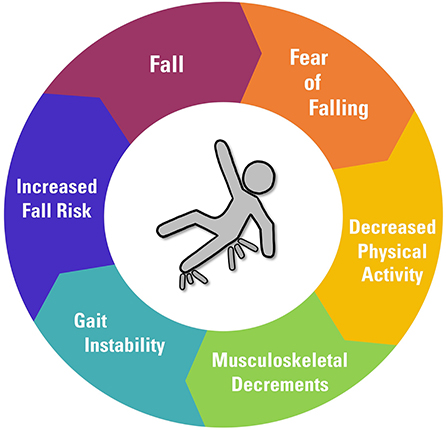The smart Trick of Dementia Fall Risk That Nobody is Discussing
Table of ContentsFascination About Dementia Fall RiskThe Best Strategy To Use For Dementia Fall RiskDementia Fall Risk for DummiesThe Ultimate Guide To Dementia Fall Risk
A loss threat assessment checks to see exactly how likely it is that you will certainly drop. It is mainly provided for older adults. The assessment generally consists of: This includes a collection of questions about your overall health and if you've had previous drops or issues with balance, standing, and/or walking. These devices evaluate your stamina, balance, and stride (the method you walk).STEADI includes screening, evaluating, and intervention. Interventions are suggestions that might lower your risk of dropping. STEADI includes 3 steps: you for your threat of dropping for your risk factors that can be improved to try to avoid drops (for instance, balance issues, impaired vision) to decrease your danger of dropping by using efficient approaches (for instance, providing education and learning and resources), you may be asked several concerns including: Have you fallen in the past year? Do you feel unstable when standing or strolling? Are you fretted about falling?, your provider will certainly evaluate your toughness, balance, and gait, utilizing the following autumn analysis tools: This test checks your gait.
You'll rest down once again. Your service provider will examine for how long it takes you to do this. If it takes you 12 seconds or more, it might imply you go to greater risk for a fall. This examination checks stamina and equilibrium. You'll rest in a chair with your arms crossed over your upper body.
Relocate one foot halfway forward, so the instep is touching the big toe of your other foot. Relocate one foot fully in front of the various other, so the toes are touching the heel of your various other foot.
The 7-Second Trick For Dementia Fall Risk
The majority of drops happen as a result of numerous contributing elements; for that reason, managing the threat of falling begins with identifying the elements that add to fall threat - Dementia Fall Risk. Some of the most relevant threat aspects include: History of previous fallsChronic medical conditionsAcute illnessImpaired stride and balance, reduced extremity weaknessCognitive impairmentChanges in visionCertain risky medications and polypharmacyEnvironmental aspects can additionally boost the risk for falls, consisting of: Inadequate lightingUneven or damaged flooringWet or slippery floorsMissing or damaged hand rails and order barsDamaged or incorrectly fitted devices, such as beds, mobility devices, or walkersImproper usage of assistive devicesInadequate guidance of the people residing in the NF, consisting of those who display hostile behaviorsA successful autumn threat monitoring program calls for a comprehensive clinical evaluation, with input from all participants of the interdisciplinary team

The care plan must also include interventions that are system-based, such as those that advertise a risk-free environment (suitable illumination, handrails, get hold of bars, and so on). The efficiency of the interventions must be examined periodically, and the treatment strategy changed as required to show modifications in the fall danger analysis. Carrying out an autumn danger management system making use of evidence-based ideal practice can minimize the frequency of falls in the NF, while restricting the potential for fall-related injuries.
Indicators on Dementia Fall Risk You Need To Know
The AGS/BGS standard suggests screening all grownups matured 65 years and older for autumn threat each year. This screening is composed of asking patients whether they have actually fallen 2 or more times in the past year or looked for clinical interest for a fall, or, if they have not fallen, whether they really feel unstable when walking.
Individuals who have fallen once Get More Information without injury should have their balance and stride assessed; those with gait or equilibrium abnormalities need to get added assessment. A history of 1 fall without injury and without gait or balance troubles does not call for additional analysis past continued yearly fall risk screening. Dementia Fall Risk. An autumn danger assessment is called for as part site here of the Welcome to Medicare assessment

Facts About Dementia Fall Risk Revealed
Documenting a drops background is just one of the high quality indicators for loss prevention and monitoring. A critical part of danger assessment is a medicine review. A number of courses of medicines raise loss risk (Table 2). copyright medications in certain are independent forecasters of drops. These drugs tend to be sedating, modify the sensorium, and hinder equilibrium and gait.
Postural hypotension can usually be eased by reducing the dosage of blood pressurelowering drugs and/or quiting medications that have orthostatic hypotension as a side effect. Use above-the-knee assistance tube and sleeping with the head of the bed raised may also reduce postural reductions in high blood pressure. The suggested aspects of a fall-focused physical exam are displayed in Box 1.

A TUG time above or equal to 12 secs recommends high autumn threat. The 30-Second Chair Stand test examines reduced extremity strength and equilibrium. Being not able to stand from a chair of knee elevation without check out here using one's arms suggests increased autumn risk. The 4-Stage Balance examination assesses static equilibrium by having the patient stand in 4 positions, each gradually a lot more challenging.